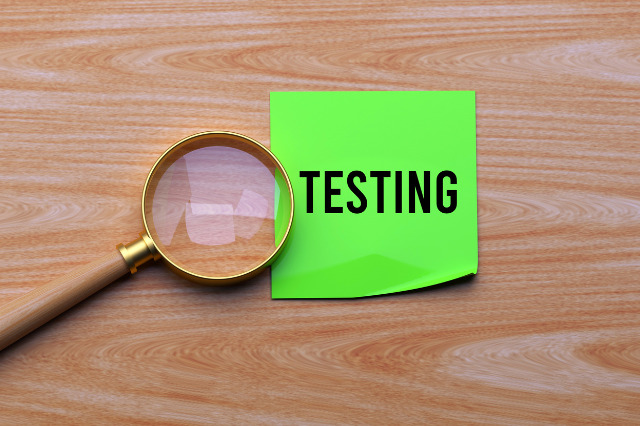Optimizing Your Digital Marketing Strategy with A/B Testing

Welcome! In the ever-changing world of digital marketing, it’s crucial to stay ahead, understand your audience and optimize your strategies. One of the best ways to do just that is through A/B testing. But what exactly is A/B testing and how can you use it to your advantage? Stick with us as we dive into the answers to these and many more questions.
A/B testing, also known as split testing, is an experimental approach to web design and marketing that compares two versions of a webpage, email campaign, or other marketing asset to determine which one performs better.
Whether you’re a seasoned marketer or a fresh entrepreneur, A/B testing can provide you with important insights and guide your future strategies. Today, we will help you understand:
- What A/B testing is and why it’s important.
- How to create and execute a successful A/B test.
- How to analyze and leverage the results for your decision making.
Ready to dive into the world of A/B testing? Let’s start this remarkable journey towards data-driven decision making and improved marketing tactics.
Setting Clear Goals for A/B Testing
Before embarking on an A/B testing journey, it’s crucial for you to define clear, measurable goals. Without an end goal in sight, tests can become a confusing web of data with no actionable results. Your goal could be anything from increasing email subscription sign-ups to boosting product purchase on your e-commerce site. The key point to remember is: choose a goal that aligns with your business objectives.
Once you’ve set your primary goal, it’s time to establish key performance indicators (KPIs). KPIs are measurable values that demonstrate how effectively a company achieves its business objectives. For example, if your goal is to increase the number of sign-ups, your KPI could be the percentage increase of sign-ups post A/B testing. Defining your KPIs will help in evaluating the success or failure of your tests.
Note: It is important to set one primary goal and related KPIs to avoid confusion and achieve clear results.
Now that you’ve set the foundational tranche, delve a bit deeper into the specifics. Here’s where micro-goals come. Micro-goals are smaller, bite-sized objectives that support the overall goal. For instance, an increased click-through rate on the sign-up button would be a micro-goal supporting the overall objective of getting more sign-ups.
“It’s not about what the software does, it’s about what you can do with the software.”- Unknown
Once you have a solid objective, a reliable KPI, and have identified your micro-goals, be prepared for the unexpected. Though you’re pursuing a particular path, A/B testing might unravel insights that were not part of your original plans. Be open, adaptable and remember that the key to successful testing lies in maintaining the balance between your vision and the results that emerge.
To conclude, clear goals are the drivers of a focused A/B testing approach which in turn enables effective decision-making. So don’t shy away from investing your time in this step because this foundation will impact your entire testing process.
Selecting the Right Elements to Test
Picking the right elements to test in an A/B testing scenario can help tip the scales in your favor. When we talk about ‘elements’, these can be anything from colors, designs, headlines, CTA buttons, overall website layout, loading time to social proof, and copywriting techniques. Let’s delve into how you can select the right elements to test effectively.
1. Identify Key Performance Indicators (KPIs): First of all, you need to identify the crucial key performance indicators pertinent to your campaign. It could be anything, such as click-through rates, time spent on the website, or conversion rates. These will help you determine what elements directly influence your desired outcome.
2. Recognize your visitors’ behaviors: Using web analytics tools, you can get a clear picture of your site users. Get insights such as what they are clicking on, where they spend their most time, and the pages they often ignore. This knowledge can guide you in selecting what elements to test first.
3. Heatmap analysis: A heatmap is a visual representation of the activity on your website. It shows where users click, scroll, and the areas they hover over the most. This insight gives you a clue about what elements might need to be changed or optimized.
| Tool | Description |
|---|---|
| Crazy Egg | An effective tool that generates heat maps and scroll maps to help you understand your users’ interaction with your website. |
| HotJar | HotJar is not just a heatmap tool. It also helps with user session recordings which is a goldmine of user behaviour information. |
The information gathered from all these steps provide the basis for the elements to test with A/B testing. It’s important to change one thing at a time, so you can directly link any improvement or reduction in performance back to the specific element you changed.
Note: The steps above are helpful but don’t forget that effective A/B testing requires constant practice and revision. You won’t always get it right the first time, but the more tests you run, the better you get at understanding what has an impact and what doesn’t.
Crafting Effective A/B Testing Hypotheses
When you’ve set your goals and selected the elements to test, it’s time to move onto a critical phase: crafting effective A/B testing hypotheses. Remember, a hypothesis in this context is an assumption that’s made based on what you know about your audience and your product. It serves as a prediction about the possible outcome of your A/B test.
Developing a strong hypothesis isn’t merely about guessing. It has to be based on concrete data, plus it should be testable and measurable. Thus, a well-formed hypothesis often takes the form of “If (I do this), then (this will happen)”.
So, you might, for instance, hypothesize that “If I place the ‘Subscribe’ button above the fold on my blog’s homepage, then more visitors will sign up for my newsletter.” Here are a few steps to guide you in crafting an effective A/B testing hypothesis:
- Research your audience: Dive into your data, conduct surveys, and leverage analytics tools to understand your audience. What are their behaviors, preferences, and pain points?
- Identify variables: Once you have a good understanding of your audience, identify the variables that could affect their decisions. These could be elements such as webpage design, email subject lines, call-to-action placements, etc.
- Create a statement: Based on the insights you’ve gathered, draft a hypothesis. Remember, it should be specific and should represent a change you can make and measure.
To make your hypothesis actionable, ensure that it clearly spells out the change you want to make, the result you anticipate, and the metric you’ll use to measure the change. That way, you can avoid vague hypotheses and concentrate on strategic ones that align with your business objectives.
Consider using a Hypothesis Prioritization Matrix to assess and rank your hypotheses. This table often includes columns for hypothesis description, the potential impact, the probability of success, and the ease of implementation. This matrix helps prioritize A/B tests based on their potential returns versus the resources needed.
| Hypothesis Description | Potential Impact | Probability of Success | Ease of Implementation |
|---|---|---|---|
| Changing homepage CTA color to blue | High | Medium | Easy |
| Overhauling website’s UX design | Very High | Low | Difficult |
| Adding social proof to product pages | Medium | High | Moderate |
In summary, crafting an effective A/B testing hypothesis isn’t hard. Just remember, every hypothesis should be data-informed, include a measurable outcome, and be framed in a way that it helps reach your goals. After all, the objective here is to make educated, data-driven marketing decisions.
Designing A/B Testing Experiments
After you’ve identified your goals, selected your test elements, and drafted your hypotheses, the next step is to beautifully design your A/B tests. Designing A/B testing experiments is not a complicated process, but it’s crucial to execute each step correctly.
First, take a quick look at your site or the element you plan to test. What is the normal form of the element? This is your control, or “A,” version. Next, create a modified or “B” version based on your hypothesis. This could involve altering colors, changing CTAs, modifying content, or any number of adjustments.
Design is always essential, but with A/B testing, even the tinies changes could lead to significant improvements. Here’s how to approach it:
- Replicate Conditions: Make sure that each participant in your test experiences the exact same conditions, barring the single variable you’re testing. Any extraneous changes cause unwanted noise and could affect the results.
- Consider User Experience: When creating your “B” version, consider how changes will impact user experience. Will the changes make your website easier to use or understand? Do they aid in customer’s journey to conversion?
- Visual Design: Excellent visual design doesn’t just mean creating beautiful elements, it’s about ensuring that those elements work harmoniously within your layout. Be consistent in your design philosophy throughout your test.
- Monitor Participant Behavior: Use tracking tools to gain insights into how participants are interacting with each version. This can help identify potential issues or opportunities that may not be obvious from the results alone.
Note: Always remember to maintain focus on your hypothesis and goal while designing. Don’t stray away from your goal or get caught up with too many changes at once!
Your test should be designed in a way that if there is a significant difference in results between the two designs, the reason will be unambiguous. You’re not simply picking a winner, but enhancing your understanding of what works and what doesn’t: making you a stronger, data-driven marketer.
So, get creative, be diligent, and start designing your A/B tests.
Implementing A/B Testing Tools and Software
Now that you have your goals set, your elements selected, your hypotheses crafted, and your experiments designed, it’s time to look at the implementation of A/B testing tools and software. We know it can seem overwhelming, but don’t worry—we’re right here with you every step of the way.
A/B testing software essentially allows you to show two different versions of the same element to your audience, then track and analyze the performance of each. Some popular A/B testing tools include Optimizely, Google Optimize, Adobe Target, and Convert.
Picking the right tool
Choosing a tool for your testing needs will depend on your specific requirements. Here are a few factors to consider when choosing an A/B testing tool:
- Usability: Is the tool user-friendly, or is it complex and hard to use?
- Integration: Does the tool integrate well with other tools you’re using, like your analytics tools or your Content Management System (CMS)?
- Features: Does the tool offer features that will meet your specific needs, like multivariate testing, split URL testing, visual editor, etc.?
- Cost: What’s the cost of the software, and does it fit into your budget?
Setting up your test
Once you’ve selected your tool, it’s time to set up your test. No matter what tool you’re using, the fundamental process remains the same:
- You set up the two variations of your page (A & B).
- You define the segment of your audience that will participate in the test.
- You set up the goals you want to track (say, clicking a button or making a purchase).
- Then, you launch your test.
Understanding data collection
Your A/B testing software will track the performance of each variant and collect data for you. This data is usually presented in the form of a report that contains the metrics of each variation, broken down by the number of visitors, conversions, conversion rate, etc.
Note: Remember, while running the tests, experiment with one element at a time so that you can pinpoint exactly what caused the increase or decrease in your conversion rate. This is why it’s called A/B testing and not A-Z testing!
In the next section, we’ll go through how to properly analyze these results to help you make data-driven decisions for your digital marketing strategy.
Analyzing A/B Testing Results
After you’ve pressed go on your A/B test and collected a solid amount of data, it’s time for what might be the most exciting part: analyzing the results. This will give you a deep insight into what your audience prefers, helping you to strike a chord with your users and meet your business objectives. Don’t rush this step—it’s critical for making informed decisions.
Step 1: Begin by revisiting your original hypothesis and recalling the expectations you set. Remember that a successful A/B test is not always about confirming your hypothesis. Sometimes, the most valuable insights come when our assumptions are proven wrong!
- Did your new call-to-action increase click-through rates as anticipated?
- Did that streamlined web design indeed reduce bounce rates?
Step 2: Dive Deep into the Data
Use your A/B testing tool to review the collected data. Here, you’re primarily looking at the engagement metrics of your test and control groups. Break down the data and look at:
- Overall website traffic and page views.
- Click-through rates for specific elements.
- Conversion rates, whether that’s purchase, sign up, download, etc.
- Bounce rates and exit rates.
Step 3: Understand the Statistical Significance
It’s important to ensure your results are statistically significant—that they are not the result of coincidence or random chance. To do this, you calculate a P-value. If it’s less than 0.05, you can be confident that your results are valid.
Step 4: Drawing Conclusions
In this step, you’re trying to make sense of what the numbers are telling you. High click-through rates, for example, can suggest that your change was successful in capturing users’ attention. However, if the bounce rates are also high, it might mean that while the design hooked them initially, the content failed to meet their expectations. This is where you find the story behind the data.
Step 5: Implement or Iterate
Depending on what you learned from the data, you may decide to implement the tested element on your website, fine-tune it and run another test, or scratch it altogether and start fresh! Always remember, the ultimate goal of A/B testing is continual improvement.
Remember, A/B testing is an ongoing process—a commitment to always striving for better. There’s no room for “one-size-fits-all” in digital marketing. With A/B testing, you’ve got the power to make data-driven decisions that are tailored to what your specific audience wants and responds to. Keep on testing!
Reference : https://www.optimizely.com/optimization-glossary/ab-testing/




